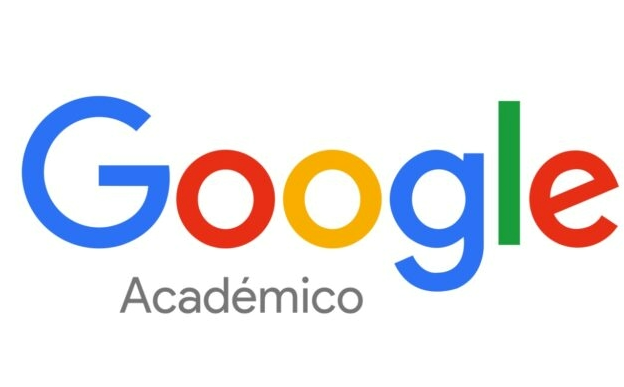Caracterización Fisicoquímica y organoléptica de vino de Mango (Mangifera Indica L.) Obtenido a partir de tres tipos de tratamiento con azúcares
DOI:
https://doi.org/10.70833/rseisa10item157Keywords:
wine, mango, sugarAbstract
The objective of this research was to characterize physicochemical and organoleptically the mango wine (Mangifera Indica L), coming from three types of treatments with different types of sugars applied to the must prior to the fermentation process; to provide useful information in the elaboration Of mango wine for the use of mango fruits in the department of Itapúa, and in mango producing regions in Paraguay. The design was completely randomized with 3 treatments M1, M2, M3 and 3 repetitions of each, with added refined white sugar and brown sugar, and without added sugar, previously adjusting the Total Acidity and Ionic Acidity of the must. The treatments were carried out in bioreactors of 5 liters capacity. Inoculated with 1 g/L of Saccharomyces cerevisiae and stationed at 25°C for 15 days; then decanted, bottled, corked and parked for 75 days. The M2 treatment with brown sugar presented the highest value of alcoholic strength, while the treatment with white sugar M1 the highest value of Soluble Solids (p <0.05) Totals. The treatment without added sugar presented chemical values below the values expressed in treatments M1 and M2. The values given by the chemical determinations to the three treatments M1, M2 and M3 are within the parameters established by the reference standards COVENIN-1993 and COVENIN-1997, as well as the parameters established by the MERCOSUR / GMC / RES STANDARD N 45/96 for wines. As for the organoleptic analysis, the most accepted wine was the M2 treatment, followed by the M1 treatment, and the least accepted was the M3 treatment.
Downloads
References
Aquino, C. M. (2015). Potencial Agroindustrial del mango, banana y piña. Unidad de Estudios Agroeconómicos. Ministerio de Agricultura y Ganadería. Paraguay. Folleto Digital.
Álvarez, R.; Manzano, J.; Materano, W. y Valera, A. (2009). Caracterización química y sensorial del vino artesanal de tomate de árbol (Cyphomandra betaceae) Revista UDO Agrícola Digital.
Bompard, J. M. y Schnell R. (1997). Chapter 2. Taxonomy and Sistematics. R.E. Litz Editorial. The Mango, Botany, Production and Uses. Cab International.
Carreño, A.C. y Aristizábal, M. (2003). Aprovechamiento postcosecha de plátano para la obtención de vino. InfoMusa.
Censo Agropecuario Nacional. (2008). Dirección de Censo y Estadísticas Agropecuarias. Ministerio de Agricultura y Ganadería. Paraguay. Formato Digital.
COVENIN. (1977). Comisión Venezolana de Normas Industriales. Frutas y productos derivados. Determinación de acidez. Norma Venezolana COVENIN 1157:1977.
COVENIN. (1979). Comisión Venezolana de Normas Industriales. Alimentos. Determinación de acidez iónica. Norma Venezolana 1315:1979.
COVENIN (19831. Comision Venezolana de Normas Industriales. Frutas y productos derivados. Determinación de sólidos solubles totales por refractometria
COVENIN. (1993a). Comisión Venezolana de Normas Industriales. Bebidas alcohólicas. Determinación del grado alcohólico. Norma Venezolana COVENIN 3042:1993.
COVENIN. (1997a). Comisión Venezolana de Normas Industriales. Vino y sus derivados. Requisitos. Norma Venezolana COVENIN 3342:1997.
COVENIN. (1997b). Comisión Venezolana de Normas Industriales. Vino y sus derivados. Determinación de acidez total y acidez volátil. Norma Venezolana COVENIN 3286:1997.
Crueger, Wulf and Crueger, Anneliese. (1993). Biotecnología: manual de microbiología industrial. Zaragoza, España: Editorial Acribia.
De Landa, D. (1985), Relación de las cosas de Yucatán Editorial Historia. México.
Del Pozo, J. (1998). Historia Del Vino Chileno. Editorial Universitaria. Santiago, Chile .
Dengis, J. y Dengis, M. F. (2006). Vino Argentino Manual Práctico, Editorial Albatros. Argentina.
Diario Última Hora. (martes 4 de Febrero de 2014). Luigi Bosca es la marca mas recordada. Ultima Hora Digital. Recuperado en marzo de 2015,
Kosterman, A. J. G. H. y Bompard, J. M. (1993). The Mangoes, their Botany, Nomenclature, Horticulture and Utilization (pp. 55-67). Academic Press. London.
MERCOSUR. (1996). GMC/RES N° 45/96. Reglamento Vitivinicola del Mercosur. Requisitos Generales. MERCOSUR/GMC/RES N° 45/96
Minaya, A. (2010). El mango en Perú y sus vínculos con el mercado. Centro Regional Andino y Agencia de Cooperación Técnica de Perú. Revista Informativa Digital.
Oreglia. F. (1978). Enología: Teórico-Práctica, Volumen 1. Ediciones Instituto Salesiano De Artes Gráficas. España
Padín, C., Goitia, J., Hernández, R., Leal, L. (2012). Caracterización química y sensorial de vino artesanal de melón (Cucumis Melo L. Var. Reticulatus Naud., Cv. Ovation). Revista Venezolana de Ciencia y Tecnología de Alimentos. 3(2): 270-284.
Peñin, J. (2008). Historia Del Vino. Espasa Libros. España.
Peynaud, E. (1984). Enologia práctica. (2da. ed.). Madrid: Mundi-Prensa.
Popenoe, W. (1920). Manual of Tropical and Subtropical Fruit. Editorial The Macmillan Company.
Ribéreau-Gayon, J., Peynaud, E., Ribéreau-Gayon, P., Sudraud, P. (1975). Traité D'oenologie, Sciences et Techniques Du Vine, Volumen. 2. Dunod. France.
Rodríguez C. M., Guerrero, M. B., Sandoval, R. (2002). Guía Técnica del Cultivo de Mango. Centro Nacional de Tecnología Agraria. Colombia.
Segarra M., O. (2004). La Cultura Del Vino. Una guía amena para pasar de iniciado a experto en vinos. Editoral Ammat. Chile.
Shahidi, F., Naczk, M. (1995). Phenolics in Food and Nutraceuticals. Front Cover. Technology & Engineering. USA.
Singh, LB. (1960). The Mango: Botany, Cultivation, and Utilization. Portada. Singh. Hill, 1960-Mango (pp.438). Leonard Hill. Londres.
Valmayor (1961) The Mango Its Botany And Production. Universiry of Phillippines, Laguna The Phillippines.
Varnam, M. Sutherland. C. (2009). Bebidas. Tecnología, Química y Microbiología Tema: Cocina. Editorial Acribia Editorial, España.
Velasco, J. (1974). The Mango, Its Botany and Production. University of The Philippines. College Of Agriculture, College, Laguna.
Downloads
Published
How to Cite
License

This work is licensed under a Creative Commons Attribution 4.0 International License.
Creative Commons Attribution License CC-BY
You are free to:
Share — copy and redistribute the material in any medium or format.
Adapt — remix, transform, and build upon the material for any purpose, including commercially.
Under the following terms:
Attribution — You must give appropriate credit, provide a link to the license, and indicate if any changes have been made. You may do so in any reasonable way, but not in any way that suggests that you or your use is endorsed by the Licensor.







